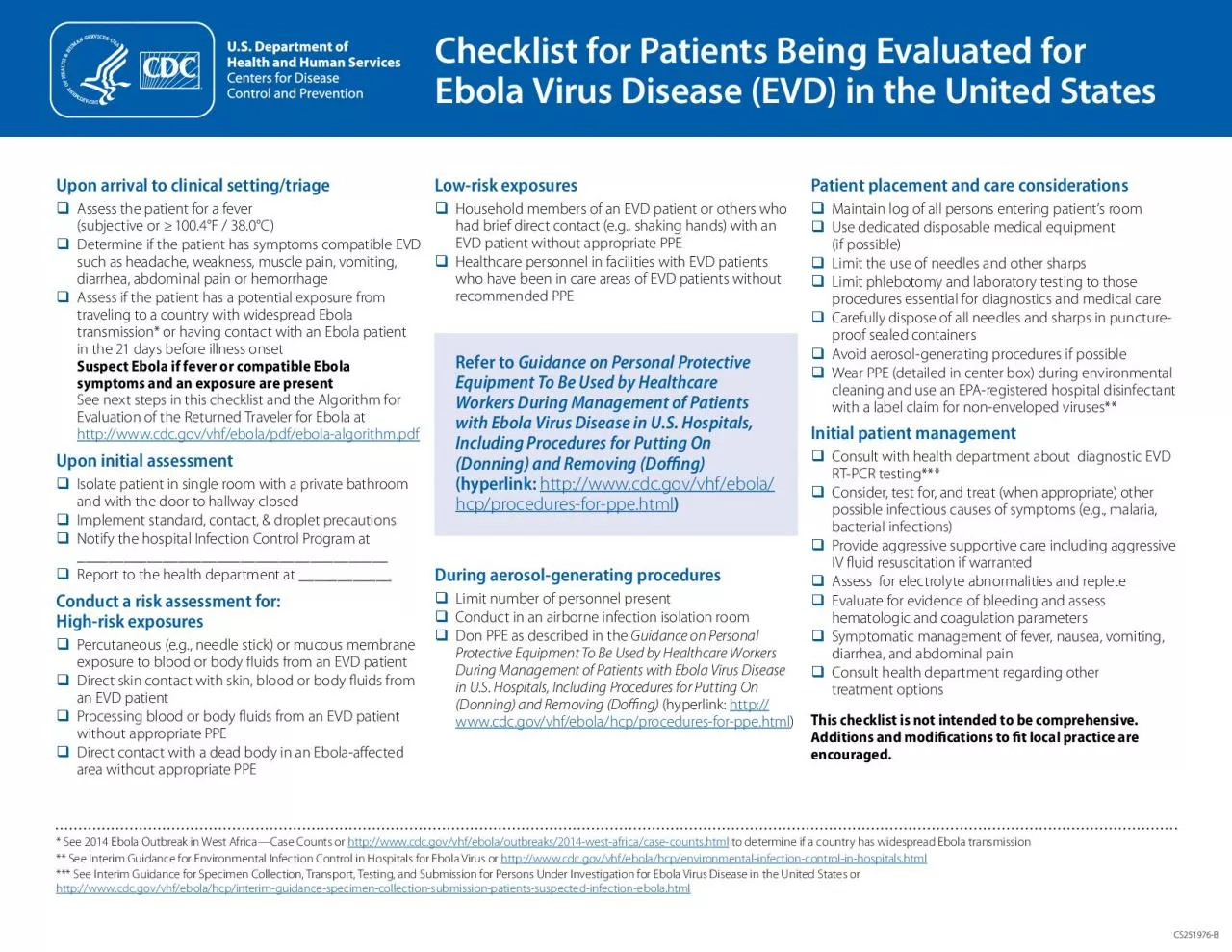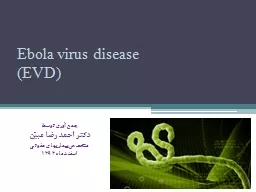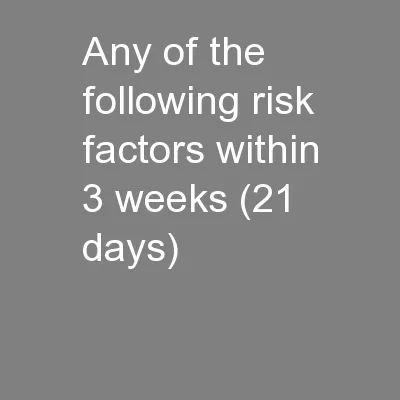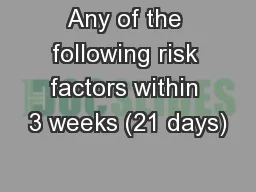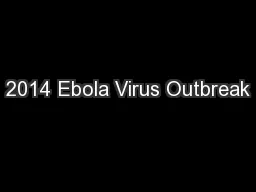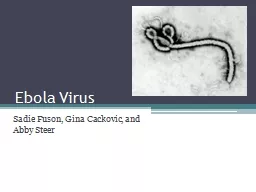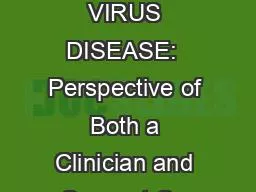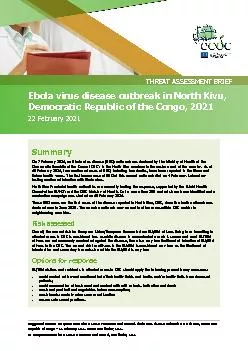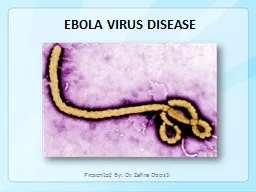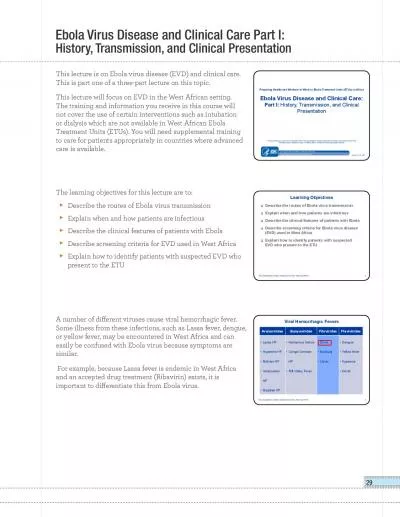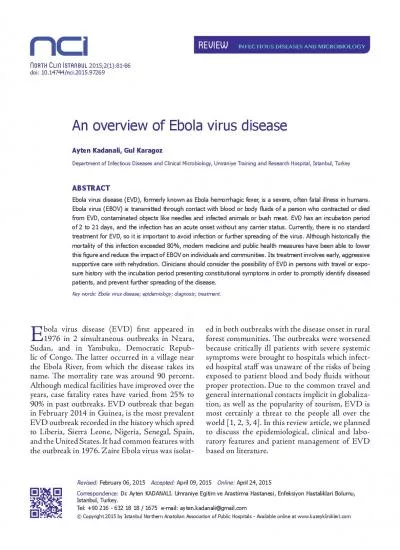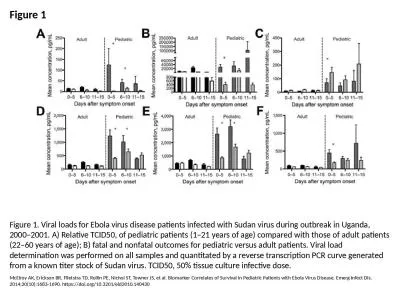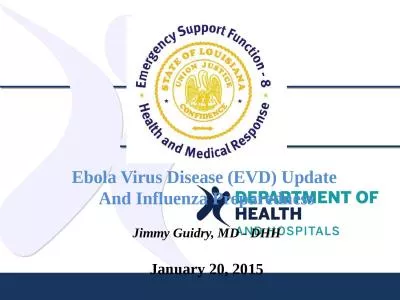PDF-Checklist for Patients Being Evaluated for Ebola Virus Disease EVD i
Author : caitlin | Published Date : 2022-09-07
Upon arrival to clinical settingtriage Assess the patient for a fever subjective or 31 004F 380C Determine if the patient has symptoms compatible EVD such as headache
Presentation Embed Code
Download Presentation
Download Presentation The PPT/PDF document "Checklist for Patients Being Evaluated f..." is the property of its rightful owner. Permission is granted to download and print the materials on this website for personal, non-commercial use only, and to display it on your personal computer provided you do not modify the materials and that you retain all copyright notices contained in the materials. By downloading content from our website, you accept the terms of this agreement.
Checklist for Patients Being Evaluated for Ebola Virus Disease EVD i: Transcript
Download Rules Of Document
"Checklist for Patients Being Evaluated for Ebola Virus Disease EVD i"The content belongs to its owner. You may download and print it for personal use, without modification, and keep all copyright notices. By downloading, you agree to these terms.
Related Documents

